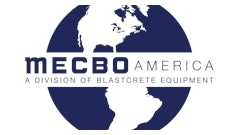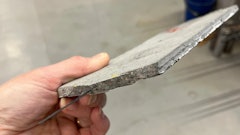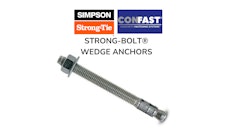This article discusses the Occupational Safety and Health Administration (OSHA) regulations that will go into effect in September 2017. We believe it is in your best interests as an employer and as a for-profit company to understand the history of the issue, the regulations that have been established and the impact this will have on the tilt-up and related concrete work in which you are involved. Therefore, we have taken the opportunity to interview several of TCA’s leaders to understand their approach and opinions on this matter.
THE ISSUE: HEALTH HAZARD Crystalline silica are defined as the fine particles stemming from soil, sand, granite and other minerals that are made airborne during construction activities involving chipping, cutting, drilling and grinding, as well as more invasive operations such as abrasive blasting. The presence of these particles affects more than 2,000,000 U.S. workers annually. OSHA states on their website: www.osha.gov:
“The seriousness of the health hazards associated with silica exposure is demonstrated by the fatalities and disabling illnesses that continue to occur in sandblasters and rock drillers. Crystalline silica has been classified as a human lung carcinogen. Additionally, breathing crystalline silica dust can cause silicosis, which in severe cases can be disabling, or even fatal. The respirable silica dust enters the lungs and causes the formation of scar tissue, thus reducing the lungs’ ability to take in oxygen. There is no cure for silicosis. Since silicosis affects lung function, it makes one more susceptible to lung infections like tuberculosis. In addition, smoking causes lung damage and adds to the damage caused by breathing silica dust.”
OSHA’s warning, however, is followed by good news: silicosis is 100% preventable! Using power tools with dust attachments and/or accessories and dust extractors with the right filters, exposure to silica can be drastically reduced. This exposure reduction is made possible by technological improvements that have been made throughout the industry to equipment, monitoring and PPE. Nearly every company that manufactures drills, saws, chippers and other equipment essential to the nature of performing concrete construction and repair operations now has equipment marketed with new OSHA Silica Compliant ratings.
(More on the impact this will have on the tilt-up and related concrete work)

























